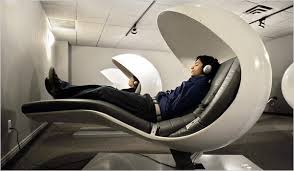Four Core Needs of Every Employee

September 23, 2015 | Posted in Leading Hartfully | By Gaia Hart
The Harvard Business Review interviewed more than 19,000 people, at all levels in companies, across a broad range of industries asking the question of what stands in the way of our being more satisfied and productive at work.
The results were that people feel better and perform better and more sustainably when four basic needs are met:
- renewal (physical);
- value (emotional);
- focus (mental);
- and purpose (spiritual).
No big surprises in the answers as this is what I’ve been teaching for decades that when we feel more energized, appreciated, focused and purposeful, then we perform better. I recently read several articles in Training journals about the importance of play at work and gamification in the learning arena helping workers learn better and having more fun at work improves productivity. Really? They are JUST NOW printing these articles?? Those of us in the Recreation and Training industries have known for many decades that work made fun gets gone and good times lead to good business. Also that laughter and learning go together to improve retention. When we are more fully engaged, present, comfortable, centered and on purpose, we do better all the way around in life.
When we get to rest and renew our energy during the day, we are better able to focus, handle workloads and be creative. One reason to get out of your office over your lunch break. Your brain and your body need a rest so you come back refreshed and renewed.
Feeling valued creates a deeper level of trust and security at work, which frees us to spend less energy seeking and defending our value, and more energy creating it. Having a sense that what we do matters and serves something larger than our immediate self-interest toward our personal purpose which hopefully is aligned with the organizational purpose is a grand source of motivation.
What’s surprising about our survey’s results is how dramatically and positively getting these needs met is correlated with every variable that influences performance. What they found that meeting even one of the four core needs had a dramatic impact on every performance variable in the study. When all four needs are met, the effect on engagement rises from 50 percent for one need, to 125 percent. Engagement, in turn, has been positively correlated with profitability.
You can start with just one core need and add the others as the previous one becomes habit and ingrained in your organizational culture. Only 20 percent of respondents said they were encouraged by their supervisors to take renewal breaks during the day. By contrast, those who were encouraged to take intermittent breaks reported they were 50 percent more engaged, more than twice as likely to stay with the company, and twice as healthy overall. Leaders need to question their outdated assumptions that that performance is best measured by the number of hours employees puts in — and the more continuous the better — rather than by the value they generate.
In a recent interview with Arianna Huffington of The Huffington Post empire regarding nap pods she has installed in her organization; she stated that she does not pay her staff for their stamina, she pays them to for their creative brain power and if they are too tired to think, they are not bringing creative ideas to the table. So a renewal nap of 20 minute is certainly worth it in the long run. You can’t argue with that.
What Energizes a Workplace and a Workforce, Anyway? The Softer Side of Leadership

July 29, 2014 | Posted in Leading Hartfully, Living Hartfully | By Gaia Hart
I began studying what energizes individuals about 30 years ago and it morphed into researching what energizes organizations in the 1990’s. It was fascinating to me how some people had so much energy to burn and others seemed drained much of the time. The same with organizations. Some seemed to have an engaged and excited workforce powered on their own “esteem engines” and others needed the command control to keep them producing out of fear and threat of paycheck revocation.
When I read about the enormous undertaking of one of Gallup’s largest and longest undertakings studying employee engagement; it proved what I had been seeing first-hand in consulting with companies around the world. A mere 30 % of employees in America feel actively engaged at work. And now their 21013 version of the study found that around the world it falls to just 13%. Their study goes on to report that 55% are disengaged and 20% are actively disengaged and doing things to sabotage the effort. So instead of work being an enthusiastic expression of our gifts and talents; it would seem that it is anything but for most employees.
Last fall, interested in what makes employees satisfied, energized and productive; the Harvard Business Review conducted a survey of more than 12,000 mostly white-collar employees across a broad range of companies and industries and results were remarkably similar across all populations.
Employees are vastly more satisfied and productive, when 4of their core needs are met:
- Physical, through opportunities to regularly renew and recharge at work
- Emotional, by feeling valued and appreciated for their contributions
- Mental, when they have the opportunity to focus in an absorbed way on their most important tasks and define when and where they get their work done
- Spiritual, by doing more of what they do best and enjoy most, and by feeling connected to a higher purpose at work
The more effectively leaders and organizations support employees in meeting these 4 core needs, the more likely they experience engagement, loyalty, job satisfaction and positive energy at work, and the lower their perceived levels of stress. When employees have one need met, compared with none, all of their performance variables improve. The more needs that are met, the more positive the impact.
Employee engagement that includes involvement, commitment, passion, enthusiasm, focused effort and energy has been found to improve performance. Something we know in our gut and something Gallup once again proved to be true. Gallup found that companies in the top quartile for engaged employees, compared with the bottom quartile, had 22 % higher profitability and 10% higher customer ratings. The way we feel at work is critical to how we perform.
The following is an excerpt from a report of that study:
Renewal: Employees who take a break every 90 minutes report a 30 percent higher level of focus than those who take 0-1 during the day. They also report a nearly 50 percent greater capacity to think creatively and a 46% higher level of health and well-being. The more hours people work beyond 40 — and the more continuously they work — the worse they feel, and the less engaged they become. By contrast, feeling encouraged by one’s supervisor to take breaks increases by nearly 100 % people’s likelihood to stay with any given company, and also doubles their sense of health and well-being.
Value: Feeling cared for by one’s supervisor has a more significant impact on people’s sense of trust and safety than any other behavior by a leader. Employees who say they have more supportive supervisors are 1.3 times as likely to stay with the organization and are 67% more engaged.
Focus: Only 20% of respondents said they were able to focus on one task at a time at work, but those who could were 50% more engaged. Similarly, only one-third of respondents said they were able to effectively prioritize their tasks, but those who did were 1.6 times better able to focus on one thing at a time.
Purpose: Employees who derive meaning and significance from their work were more than three times as likely to stay with their organizations — the highest single impact of any variable in our survey. These employees also reported 1.7 times higher job satisfaction and they were 1.4 times more engaged at work.
Leaders must embrace the softer side of business and know that how employees feel is as important as what they know and what they can do. If they don’t feel like doing it, they won’t. If they don’t feel valued, they walk. If they don’t feel respected, they leave or call in sick. If they don’t feel inspired and energized and feel like they matter; they won’t produce. Leaders much pay attention to what was previously thought of as soft skills and ensure they ask employees what would make them feel more energized, more cared for and what would improve their quality of life at work.
Other things I’ve seen client companies do is to create fitness facilities and nap rooms, and to provide healthy, high-quality food for free, or at subsidized prices, offer dry cleaning pick-up or car detailing in the workplace. Others offer Fed-ex and UPS delivery and drop off for employees and promise not to make meetings more than 90 minutes tops. Still others have bowls of M&M’s next to the coffee pots in the break rooms. What can you do as a leader to embrace the softer side of the workplace and energize your employees? It starts with a simple question of asking them what they want out of the relationship with their job and what do they need to feel better about working there. Baked goods is always a good start.
The energy of leaders is contagious. When leaders explicitly encourage employees to work in more sustainable ways and model that behavior; their employees are substantially more engaged, more focused, and more likely to stay at the company, according to the Harvard Business Review. Start inquiring now before you lose more employees to someplace that cares more about them, shows them they are concerned with how they feel and shows how they value them on many levels.
